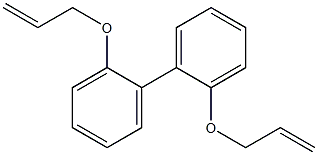Diallyl trisulfide
Synonym(s):Allyl trisulfide;Di-2-propenyl trisulfide
- CAS NO.:2050-87-5
- Empirical Formula: C6H10S3
- Molecular Weight: 178.34
- MDL number: MFCD00040025
- EINECS: 218-107-8
- SAFETY DATA SHEET (SDS)
- Update Date: 2024-11-19 23:02:33

What is Diallyl trisulfide?
Description
Hydrogen sulfide (H2S) is an endogenously-
Chemical properties
Diallyl trisulfide is a yellow liquid with a disagreeable odor. It is a stable transformation product of allicin. Insoluble in water and ethanol, miscible in ether. Natural products are found in onions, garlic, etc. Diallyl trisulfide (DATS) and diallyl disulfide (DADS) are the two major organosulfides in garlic oil.
Occurrence
Reported found in garlic oil.
The Uses of Diallyl trisulfide
Diallyl Trisulfide, is an organosulfur garlic compound that induces neovasculogenesis and has preventive effects against ischemic injuries. Antiarrythmic effect.
The Uses of Diallyl trisulfide
Diallyl trisulfide (DATS) has been used to study its antimicrobial effects against Campylobacter jejuni. It has also been used to test its effect on hepatic regeneration in partial hepatectomy (PHx) rats.
What are the applications of Application
Diallyl trisulfide is an inhibitor of chemically induced tumorigenesis
Definition
ChEBI: Diallyl trisulfide is an organic trisulfide that is trisulfane in which both of the hydrogens are replaced by allyl groups. A component of the essential oil of garlic and a major component of the traditional Chinese medicine allitridium, it exhibits antifungal, antitumour and antioxidant activity It has a role as an apoptosis inducer, an estrogen receptor antagonist, an antineoplastic agent, a vasodilator agent, an antioxidant, an anti-inflammatory agent, an insecticide, an antiprotozoal drug, a platelet aggregation inhibitor and an antilipemic drug.
Preparation
In nature, diallyl trisulfide is formed from alliin and allicin.
General Description
Diallyl trisulfide (DATS) is one of the organosulfur compounds found in garlic (Allium sativum), and other Allium genera such as onions. This sulfur-rich compound is produced by the rapid disintegration of its metabolic precursor Allicin.
Biochem/physiol Actions
DATS is a potent anti-cancer and chemopreventive agent that regulates apoptosis, metastasis, cell cycle, and angiogenesis in cancer pathways. It is also an excellent neuroprotective agent. DATS elicits antioxidant and anti-inflammatory activities against doxorubicin (DOX)-induced rats brains. It may improve glycemic control, muscle glucose utilization, and insulin secretion in streptozotocin-induced diabetic rats.
Properties of Diallyl trisulfide
| Boiling point: | bp6 92°; bp0.0008 66-67° |
| Density | 1.085 |
| refractive index | nD20 1.5896 |
| FEMA | 3265 | DIALLYL TRISULFIDE |
| storage temp. | -20°C |
| solubility | Soluble in acetone, Ethanol(~3 mg/ml), DMSO (~5 mg/ml), and DMF (~10 mg/ml). |
| form | oil |
| color | Colorless to light yellow |
| Odor | at 0.10 % in propylene glycol. garlic green onion metallic |
| Water Solubility | insoluble in water. |
| JECFA Number | 587 |
| CAS DataBase Reference | 2050-87-5(CAS DataBase Reference) |
| NIST Chemistry Reference | Trisulfide, di-2-propenyl(2050-87-5) |
Safety information for Diallyl trisulfide
| Signal word | Danger |
| Pictogram(s) |
 Skull and Crossbones Acute Toxicity GHS06 |
| GHS Hazard Statements |
H301:Acute toxicity,oral |
| Precautionary Statement Codes |
P301+P310:IF SWALLOWED: Immediately call a POISON CENTER or doctor/physician. |
Computed Descriptors for Diallyl trisulfide
New Products
4-Fluorophenylacetic acid 4-Methylphenylacetic acid N-Boc-D-alaninol N-BOC-D/L-ALANINOL Tert-butyl bis(2-chloroethyl)carbamate 3-Morpholino-1-(4-nitrophenyl)-5,6-dihydropyridin- 2(1H)-one Furan-2,5-Dicarboxylic Acid Tropic acid S-2-CHLORO PROPIONIC ACID ETHYL ISOCYANOACETATE 2-Bromo-1,3-Bis(Dimethylamino)Trimethinium Hexafluorophosphate (6-METHYL-[1,3]DITHIOLO[4,5-b]QUINOXALIN-2-ONE INDAZOLE-3-CARBOXYLIC ACID 4-IODO BENZOIC ACID (2-Hydroxyphenyl)acetonitrile 4-Bromopyrazole 5,6-Dimethoxyindanone 2-(Cyanocyclohexyl)acetic acid 4-methoxy-3,5-dinitropyridine 2-aminopropyl benzoate hydrochloride 1-(4-(aminomethyl)benzyl)urea hydrochloride diethyl 2-(2-((tertbutoxycarbonyl)amino) ethyl)malonate tert-butyl 4- (ureidomethyl)benzylcarbamate Ethyl-2-chloro((4-methoxyphenyl)hydrazono)acetateRelated products of tetrahydrofuran








You may like
-
 Diallyl trisulfide, ≥98% (HPLC) CAS 2050-87-5View Details
Diallyl trisulfide, ≥98% (HPLC) CAS 2050-87-5View Details
2050-87-5 -
 Diallyl trisulfide CAS 2050-87-5View Details
Diallyl trisulfide CAS 2050-87-5View Details
2050-87-5 -
 Diallyl trisulfide CAS 2050-87-5View Details
Diallyl trisulfide CAS 2050-87-5View Details
2050-87-5 -
 Diallyl trisulfide CAS 2050-87-5View Details
Diallyl trisulfide CAS 2050-87-5View Details
2050-87-5 -
 1975-50-4 98%View Details
1975-50-4 98%View Details
1975-50-4 -
 2-HYDROXY BENZYL ALCOHOL 98%View Details
2-HYDROXY BENZYL ALCOHOL 98%View Details
90-01-7 -
 14714-50-2 (2-Hydroxyphenyl)acetonitrile 98+View Details
14714-50-2 (2-Hydroxyphenyl)acetonitrile 98+View Details
14714-50-2 -
 118753-70-1 98+View Details
118753-70-1 98+View Details
118753-70-1